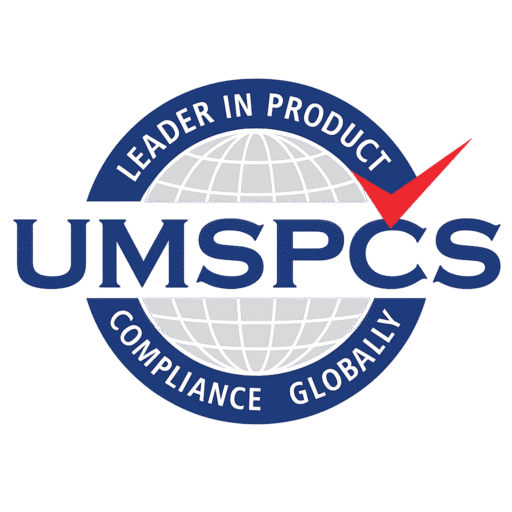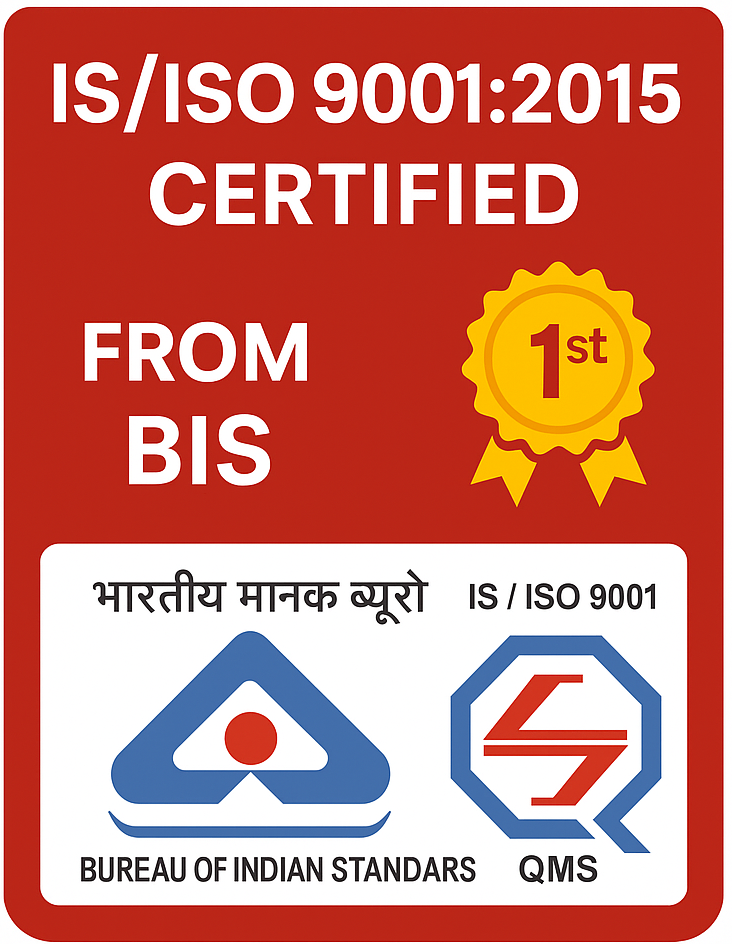
Ensuring smooth market entry with regulatory compliance for foreign brands.
BIS-ISI Certificate for Foreign Manufacture
- Introduction
- Required Documents
- Costing And Timeline
- Registration Process
- Validity And Renewal
- Product List
Do you desire your products to be certified with the BIS-FMCS mark?
If so, you've arrived to the proper place since we'll assist you with every little procedure and requirement for BIS-FMCS certification. Not to mention that India has always been the most trustworthy and advantageous destination for both foreign and domestic manufacturers. Mainly because of globalization, as it unfolded the world economy for import-export, selling products in different countries, manufacturing, and many more.
India, the world's fastest growing economy, has also invited many domestic and foreign enterprises to manufacture and sell consumer goods. Many well-known firms, such as Philips, Tata, Jhonson and Jhonson, and others, have already begun manufacturing, while others are in the planning stages.
Nonetheless, India, like other countries, has established some norms and standards to ensure that consumers receive trusted and quality assured items. You can never offer things directly to consumers unless you meet the Indian government's requirements and compliances. Here is where the BIS-FMCS mark programme comes into play, which allows producers to have their products certified by the Bureau of Indian Standards. There are currently 379 required goods available.
India, the world's fastest-growing economy, has also invited many domestic and foreign enterprises to manufacture and sell consumer goods. Many well-known firms, such as Philips, Tata, Jhonson and Jhonson, and others, have already begun manufacturing, while others are in the planning stages of massive investments.
List of Documents Required for ISI (BIS) Certification are as under:
Basic information about the factory and product category
A copy of the test report generated by the internal laboratory within a month
Proof of the Manufacturing Unit's Address
Trade Mark Registration, if available
Certificate from concerned regulatory agencies for manufacturing
Drawing of the product
Installed Capacity at the Moment
Details of Raw Materials
Details of Machines
Layout plan of factory
Details of Manufacturing Process
The type of packaging
Information on Test Equipment
Details of quality control staff
Method of disposal of substandard product
Factory Organizational Chart
Location Map of Factory
Specific Requirements for Foreign Manufacturers
For a customized and attractive quotation, please contact us with your product details at schemexbisumspcs.com
Standard Timeline
Foreign manufacturers - 5 - 6 months approx.
Process for Foreign Manufacturer
The following are the steps to obtain an BIS-ISI certificate:
Step 1 : Application
Compilation of all the required documents
Document submission and application fee
Application Number Allocation
Examining applications
Step 2 : Query Raised (If Any)
Intimation of any missing document or Non-compliance
Submission of reply
Step 3 : Inspection (Audit)
The payment of the inspection/audit fee
Nomination of Inspecting Officer
Schedule the itinerary as per availability
Inspection of Manufacturing Unit to check the Testing facilities for 3 man-day
Step 4 : Sample Testing
samples examined on the manufacturing grounds IN THE AUDIT
Samples sealed and drawn to be sent to BIS approved Laboratory
Test Reports recieved to BIS (FMCD)
Step 5 : Grant of License
Sample passed; notice to pay licence and marking fees
Letter for Grant of License issued
Step 6 : Indemnity & PBG
Agreement / Indemnity Bond signed by Authorized Indian Representative
Submission of a Performance Bank Guarantee (PBG) for USD 10,000
The initial duration of the licence to use the Standard Mark (FMCS-ISI) shall be at least one year and a maximum of two years. Applications with the necessary fees and supporting documentation under the current licence may be submitted to extend the product variety covered by the licence.
By paying renewal costs and marking fees and providing a few supporting documents, a licence may be renewed for another five years.
PRODUCTS UNDER BIS REGISTRATION SCHEME
As of now, There are following products which needs be registered with BIS and require BIS Registration to Manufacture/Import and sell the product in the INDIAN market. Click on below listed products for more information.
| BIS Products | |
|---|---|
PASSPORT READER - IS 13252(Part 1):2010* |
BIS-ISI Certification Support for Foreign Manufacturers
Product Category Assessment
Determine if your product falls under mandatory ISI certification.
Application Preparation
Complete documentation and application for FMCS submission.
Test Lab Coordination
Assist in sending samples to BIS-recognized labs in India.
Nomination of AIR
Help foreign brands appoint an Indian Authorized Representative.
Factory Inspection Support
Coordinate BIS team visits to your overseas factory.
License Grant & Marking
Assist in receiving BIS license and using ISI marking.
Renewals & Surveillance
Manage certification renewal and ongoing compliance checks.
Other General Information
BIS will only accept test reports from the following laboratories:
- Laboratories established, maintained or recognized by BIS for the product.
- Government laboratories empanelled by the Bureau.
The manufacturer's lab is not regarded as an independent laboratory.
Under Scheme-IV of Schedule II, BIS (Conformity Assessment) Regulations, 2018, the Bureau may provide a Certificate of Conformity (CoC) for goods and articles (products) made in line with the precise specifications contained in the relevant Indian Standards.
CoC is required for transformer stampings, laminations, and cores (with and without winding). IS 3024:2015 (Grain Oriented Electrical Steel Sheet and Strip), IS 648:2006 (Cold rolled non-oriented electrical steel sheet and strip), IS 16585:2016 (Fe based amorphous strip delivered in the semi-processed stage), and IS 10613:2014 are the Indian Specifications covered by CoC. (Retro-Reflective Devices for Bicycles).
The following are the steps for obtaining a Certificate of Conformity (CoC):
Step 1: Customizing the Manufacturing Unit to the CoC's needs
Coils that have the ISI mark and a mill test certificate
Building internal testing facilities in accordance with the criteria for obtaining a CoC
Step 2: Filling out the application form is step two.
Prepare the steel coils' internal test reports and MTC.
Assembling all necessary paperwork
Completing an application form
straight online payment of the application costs to BIS*
Submitting paper copies of the application form and all supporting documentation to the appropriate BIS Branch Office (BO)
Step 3: Examining the Application and Choosing an Inspection Officer
All of the information and papers submitted will be examined, and any deficiencies will be mentioned.
There will be a nomination of a BIS officer for Factory Inspection.
Step 4: Remitting Audit Fees and Inspection Travel Expenses
Pay the inspection audit fees.
Obtain verification regarding BIS Inspection Officer
Organize the visiting officer's travel, accommodations, and meals (s)
Step 5: Visit a factory
A visit to the facility will be undertaken in order to evaluate the facilities for manufacture, the production process, quality control, testing capabilities, storage space, etc.
The inspection officer will choose the random sample(s) to be tested using the testing facilities that are available.
Step 7: Fixing the Inconsistency (if any)
If the inspection officer identifies a problem, correct the factory unit's procedure.
Provide evidence of any rectifications made by the unit to close any non-conformities (NC closure).
*Payment should be remitted in BIS Account.
In compliance with Indian Specifications, separate applications must be submitted for each product and each production location.
The applicant's (the manufacturer's) business licence is required to obtain BIS Registration. A business licence serves the following purposes:
*Certificates of Calibration for Testing Equipment and Quality Control Personnel Copy of raw material test certifications, if required, to ensure compliance with the relevant product standard criteria.
*The general condition of cleanliness drawing of the product and/or its components, as appropriate
*Plant layout displaying the locations of the manufacturing areas, raw material and completed product storage spaces, testing laboratories, and so on.*Factory Location Map
*Copy of the agreement or consent letter from the outside laboratory for which subcontracting arrangements are made for tests that are permitted to be subcontracted and are not accessible from the manufacturer.
*Inspection and testing plan recommended for implementation -
Workmanship, aesthetic qualities, surface faults, description, taste, flavour, and other subjective requirements will be examined in the factory.
*In the case of bulkier items, dimensional measurements and other tests for which the entire product cannot be drawn and submitted for third-party testing (e.g., steel plates, sheets, steel pipes, etc.) must be performed during factory testing.
*If any non-conformity is discovered during factory testing, no sample shall be drawn for testing at a Third Party Laboratory. The application may be encouraged to make improvements, which will be validated by a subsequent inspection and factory testing.
Following a successful evaluation of a manufacturer's manufacturing infrastructure, production process, quality control, and internal testing capabilities, the BIS issues the ISI Mark. They are found by visiting the production facility. Testing in an independent laboratory, on-site at the manufacturer, or a mix of the two is another method for determining whether a product complies with the relevant Indian Standard (s).
The following are the steps to obtain an ISI certificate:
Application in Step 1
*Gathering of all necessary paperworks
*Application and document submission Allocated Fee Application No.
*Examining applications within 30 days
Step 2: Question is Asked (If Any)
*Notification of non-compliance or any missing documents
*Delivery of the response within 7 days
Step 3: Examination (Audit)
*Payment of the Inspection/Audit Fee Nomination of the Inspecting Officer Arrange the itinerary in accordance with the available time
*3 man-days of manufacturing unit inspection to check the testing facilities
Step 4: Testing the Samples
*Samples examined on the manufacturing grounds IN THE AUDIT
*Samples that were sealed and drawn for submission to BIS that were approved by the laboratory's test results (FMCD)
Step 5: License is issued
*Sample approved; letter requesting payment of the marking fee and licence fee issued
Indemnity & PBG in Step 6
*A Contract or indemnity bond signed by an authorised Indian representative must be submitted, together with a performance bank guarantee (PBG) of USD 10,000.
*All submission documents, including the application, must be sent twice. All overseas manufacturers are classified under "Large Scale." as per FMCS guidelines.
*The applicant must appoint an Authorized Indian Representative in order to operate under a BIS license (AIR). Before nominating an AIR, the applicant must ensure the following:
*The AIR must be an Indian national.
*In the BIS Conformity Assessment programs, the designated AIR solely represents one manufacturing company and no other foreign manufacturer (s). The ban will not apply to importers (associated to the foreign manufacturer) who have been designated as AIR or to foreign manufacturers that are part of a single group of firms.
*AIR shall not have any conflicts of interest in their role as AIR in regard to the testing of sample(s) in independent laboratories.
*The AIR should ideally have a bachelor's degree and be well-versed in the provisions of the BIS Act, 2016, as well as the rules and regulations enacted in response to it, as well as their implications.
*BIS Licence, Agreement, Undertaking, or other document executed by or on behalf of a foreign manufacturer in conjunction with the grant and operation of a licence. Each must proclaim his or her willingness to be held accountable for compliance with the BIS Act, Rules, Regulations, and Terms & Conditions as outlined in the BIS Licence, Agreement, Undertaking, and so on.
*The name AIR appears on the licence document.
*The applicant must affirm their readiness for the inspection and take all necessary procedures for the officer(s), such as procuring a translator, booking airline tickets, acquiring a VISA and insurance, and arranging transportation while abroad, so that the visit can take place as quickly as possible.
*The manufacturer is responsible for delivering the sample(s) to the labs on time and safely, as well as paying the testing expenses.
*Applicants from non-SAARC countries must pay all fees and payments in US dollars. Afghanistan, Bangladesh, Bhutan, Nepal, the Maldives, Pakistan, and Sri Lanka, as members of the South Asian Organization for Regional Cooperation (SAARC), may make payments in either equal US dollars or Indian rupees with applicable GST.
*Both the agreement and the indemnification bond must be signed.
*Upon the issuance of the licence, a $10,000 Performance Bank Guarantee (PBG) from any bank having an Indian branch that has gained RBI approval must be submitted.
*The Performance Bank Guarantee must be operational for a duration of six months longer than the licence term.


